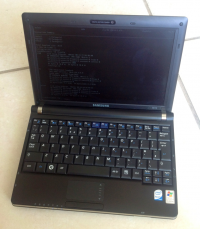 When I installed CentOS on my NC10 last year I did so knowing that its battery was bust. Since it wasn’t going to live without a power supply, I didn’t setup WiFi at the time – the NC10 being tied to one cable, I simply added another (the network cable) and that was that. Worked fine and without problems.
When I installed CentOS on my NC10 last year I did so knowing that its battery was bust. Since it wasn’t going to live without a power supply, I didn’t setup WiFi at the time – the NC10 being tied to one cable, I simply added another (the network cable) and that was that. Worked fine and without problems.
Today a new battery for my NC10 arrived, breathing new (wireless) life into the little guy – and needless to say now I wanted to setup WiFi. Sadly I don’t know enough about network adaptors under CentOS, so I thought how hard can it be?
Actually it’s easy – it’s just not very well documented on the whole wide web due to the multitude of Distribution vs Hardware configurations.
Thanks to two great articles (by Joris and Paul – find links at the end) I managed to connect my NC10 to my WiFi network: an Apple AirPort Timecapsule. It works a treat. Thanks guys!
I deviated a little from both articles, so here’s the “remix” which should work specifically for the Samsung NC10. I’m running CentOS 6.5 in 32bit, minimal installation without any bells or whistles, on a 1GB Intel Atom machine.
